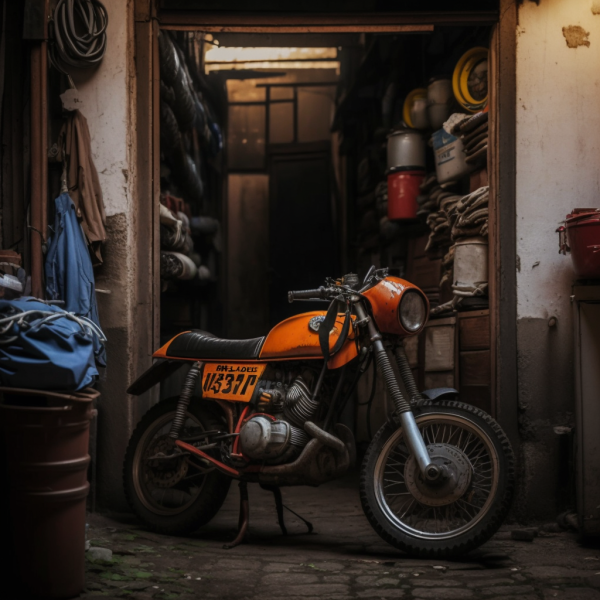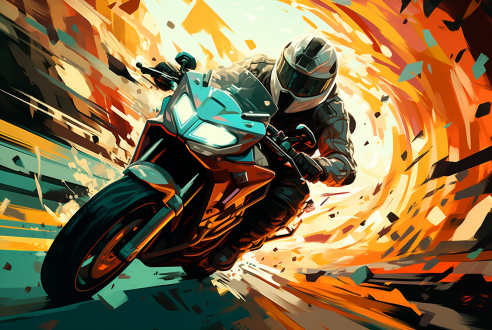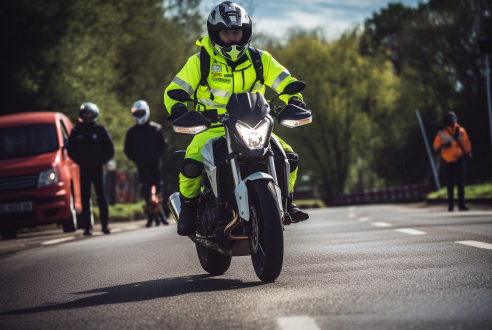
Buying a second-hand motorbike can be an affordable and exciting way to own your dream bike. However, it’s crucial to thoroughly inspect the bike before making a purchase to ensure that you are getting a reliable and safe machine. This guide will provide a step-by-step approach to inspecting a second-hand motorbike, covering all the essential areas to check.
Service history
The first thing to do when considering a second-hand motorbike is to check its service history. This will give you an idea of how well the bike has been maintained and whether it has had any major repairs in the past. Ask the seller for a record of all services and repairs that have been performed on the bike, including oil changes, tire replacements, and any engine work.
If the seller doesn’t have a service history, be cautious. A lack of service history could mean that the bike hasn’t been maintained properly, which could lead to costly repairs in the future. Alternatively, it could mean that the bike has been serviced by someone other than a licensed mechanic, which could also be a red flag.
Check the Bike’s Mileage
The next thing to check when considering a second-hand motorbike is its mileage. The more miles a bike has on it, the more wear and tear it will have experienced. While some bikes are built to last for hundreds of thousands of miles, others may require major repairs after just a few thousand.
Ask the seller for the bike’s mileage and compare it to similar bikes of the same make and model. If the mileage is significantly higher than other bikes, it’s possible that the bike has been used heavily and may require costly repairs in the near future.
Documentation
Check that the bike comes with all the necessary paperwork, such as the registration certificate (V5C) and MOT certificate. Make sure that the documents are genuine and match the details of the bike. You can also check the bike’s history online using websites such as HPI check.
Inspecting the Exterior
Inspect the bike’s bodywork for any signs of damage, including cracks, dents, rust, corrosion or scratches. Check that all the lights and indicators are working correctly, and ensure that the mirrors are securely fixed.
While some minor damage is to be expected on a second-hand bike, excessive damage could be a sign of neglect or abuse.
Inspecting the Engine
The engine is the most important part of any motorbike, so it’s important to check it thoroughly before making a purchase.
Start by checking the oil level and making sure that it’s not too low or too high. Also, check the color and consistency of the oil. If the oil is black and dirty, it may be a sign that the bike hasn’t been maintained properly.
Start the bike and let it idle for a few minutes. Listen for any unusual sounds or vibrations coming from the engine. A healthy engine should run smoothly and quietly, with no knocking or ticking sounds. Check for oil leaks around the engine and gearbox, and inspect the spark plugs for signs of wear or damage.
Ensure that the throttle response is smooth and consistent.
Checking the Chain and Sprockets
The chain and sprockets are critical components of the motorcycle’s drivetrain. Check the chain tension, making sure that it’s not too loose or too tight. Look for any signs of wear, rust or corrosion on the chain and sprockets.
Look for any signs of wear on the sprockets, such as hooked or pointed teeth, and ensure that the chain and sprockets are correctly aligned. Use a chain wear indicator to check if the chain is within the recommended tolerances. If the chain pulls back too far off the back sprocket, it’s also time to change it.
Inspecting the Brakes
The brakes are one of the most important safety features of the motorcycle, and it’s crucial to ensure that they’re in good working condition. Check the brake pads for wear and look for any signs of damage, excessive wear, grooves, any signs of warping or cracks on the brake discs. Brake discs can be expensive to replace.
Inspect the brake hoses and fittings for any signs of leaks, cracks, or bulges. Finally, test the brakes by applying them while riding the motorcycle, the brake levers should have a have a firm and consistent feel, and that they do not feel too spongy or loose.
Checking the Wheels and Tires
The wheels and tires are critical components of the motorcycle’s handling and safety. Check the wheels for any signs of damage or cracks, and inspect the spokes for tightness.
Look for any signs of wear or damage on the tires, and make sure that they have the correct tire pressure. Check the tread depth to ensure that it’s within the legal limit.
Inspecting the Suspension
The suspension is responsible for the motorcycle’s handling and ride comfort, and it’s crucial to ensure that it’s in good working condition. Inspect the fork seals for leaks and check for any pitting on the stanchions.
Look for any signs of damage or wear on the shock absorbers or springs. Finally, test the suspension by bouncing the motorcycle and checking for any excessive bouncing or rebounding. Check for leaks after compressing the forks.
Test Riding the Bike
Finally, take the bike for a test ride before making your purchase. This will give you a chance to experience the bike firsthand and make sure that it’s comfortable to ride. Test the brakes, gears, and throttle to make sure that they’re all in good working order.
During the test ride, pay attention to any unusual noises or vibrations coming from the bike. If you notice anything out of the ordinary, have the bike checked by a mechanic before making your purchase.
Final thoughts
Purchasing a second-hand motorcycle can be a fantastic way to save money, but it’s essential to ensure that you’re buying a bike that’s in good condition.
A thorough inspection is essential when buying a second-hand motorbike. By following the steps outlined in this guide, you can ensure that you are getting a reliable and safe machine.
Remember to also trust your instincts and walk away from a bike that doesn’t feel right. Always remember to prioritize safety, wear appropriate gear, and never compromise on the quality of the motorcycle.



